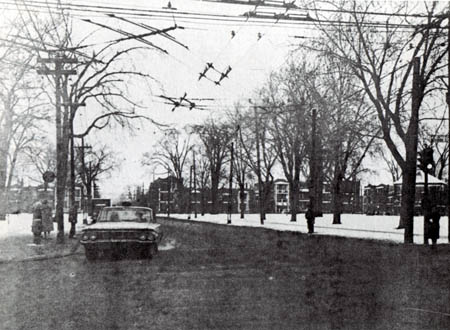From the Chicago Reader (January 24, 2008). — J.R.

The fifth feature by Jia Zhang-ke, China’s greatest contemporary filmmaker, is set in the vicinity of China’s immense Three Gorges, where the ongoing construction of the world’s largest dam has already forced the relocation of almost two million people. Against this epic canvas, their paths crisscrossing but never intersecting, a coal miner and a nurse (both from Jia’s home province of Shanxi) search for their former mates. This 2006 drama may seem to be worlds apart from the surreal theme-park setting of Jia’s previous film, The World, but there are similarities of theme, style, scale, and tone: social and romantic alienation in a monumental setting, a daring poetic mix of realism and lyrical fantasy, and an uncanny sense of where our planet is drifting. In Mandarin and Shanxi with subtitles. 107 min. (JR)
 Read more
Read more
From Monthly Film Bulletin, December 1976 (Vol. 43, No. 515). — J.R.
One Second in Montreal
Canada, 1969
Director: Michael Snow
Dist–London Filmmakers’ Co-op/Cinegate. p.c /p/ph/ed–Michael Snow. 612 ft. (at 16 f.p.s.) 26 mins.; (at 24 f .p.s.) 17 mins.

A series of thirty-odd black and white still photographs – all showing park sites for a projected monument in Montreal covered with blankets of snow — are rephotographed and shown in succession; the duration of each photograph on the screen progressively increases during the first section of the film, and progressively decreases during the second, which ends with a ‘flash’ repeat of the initial title card. A simple experiment in what might be described as the phenomenology of duration in relation to the viewer’s attention and grasp of detail, One Second in Montreal apparently owes its title to the fact that the combined exposure time of the original photographs adds up to only one second.
Praised somewhat hyperbolically as a “cinematic construction which plays upon the seriality of film images” (Annette Michelson) and a “snow film so silent you can hear the snow fall” (Jonas Mekas), the film is an ‘open’ work in the sense that it can be projected at either 16 or 24 frames per second. Read more



